ABOVE: 1980 Triumph Bonneville T140E in Steel Gray & Black.
SLOW SALES HURT CO-OP
By 1980, what was left of the “Triumph magic” had evaporated. Large numbers of 1979 Triumph motorcycles were still sitting unsold in dealer showrooms & factory warehouses. For the first time since the end of WWII, the home market (Britain) was just about as big as the US market. The Meriden Co-op, already strapped for cash, was up against a wall. But somehow, they soldiered on to give the 1980 Triumph Bonneville a few more years of life. Chalk it up to British determination & toughness.
MODEL DESIGNATIONS
1980 Triumph Bonneville T140E production kicked off the 1980 model year with Engine #PB25001. But soon the last major mechanical improvement in the long history of the Triumph Bonneville was the addition of an electric starter & a new model designation to go with it, T140ES (Electric Starter), with Engine #CB29901.
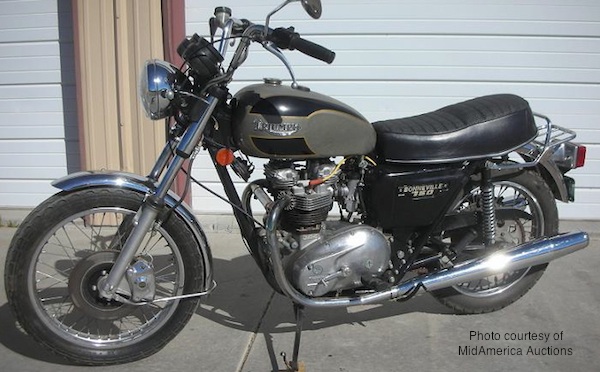
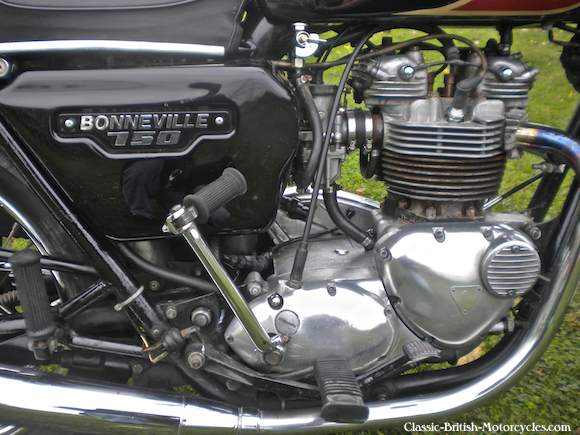
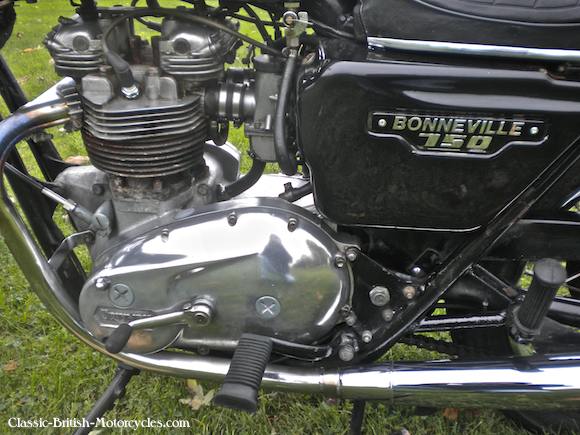
NEW OIL PUMP
Prior to the T140ES arriving, the only real change to the T140E engine was a new 4-valve oil pump & a modified timing cover to contain it, intended to prevent wet-sumping (a condition common to dry sump machines, in which gravity feeds oil out of the oil tank & through the oil pump, filling up the crankcase while the motorcycle is sitting for long periods). The new pump could be retrofitted to earlier Triumph 650 & 750 twins provided the new timing cover accompanied it, or the old one was machined. The Lucas Rita electronic ignition first used in 1979 was improved.
WOW, ELECTRIC START!
But the real news for the 1980 Triumph Bonneville was the long-awaited, long-overdue addition of an electric starter. By 1980, virtually every new motorcycle on the road had electric starters, all the way down to 250cc lightweights & below. The idea of having to jump on a kickstarter & lunge a big twin into motion seemed primitive, some would say even risky. Have you ever been stuck out in the sun kicking your Brit bike 40 or 50 times in frustration? Yet, when electric starters first became commonplace on 1960s Hondas, they all retained their kickstarters, because people thought an electric starter on a motorcycle was risky. What if the battery goes dead? Good question. By 1980, kickstarters were already disappearing on large bikes with electric starters, such was the change in public perception. Today hardly any motorcycles still have kickstarters. If the bike doesn’t start when they push the little button, most modern riders today wouldn’t have a clue.
ELECTRICS
The new 12-volt Lucas M3 starter motor nestled behind the cylinder block where the magneto used to sit on pre-unit Triumph Bonnevilles & TR6s. Like the old mag, the new starter ran through a gear train (one idler gear bushed on both ends) to the intake cam gear. A new right-side crankcase half & timing cover needed to be cast such that the new timing cover had a removable outer section in the rear which gave access to the 20:1 Borg-Warner sprag clutch. The electrical system was beefed up to handle the new load, with a 14-amp Lucas RM24 3-phase alternator, a Yuasa YB14L battery & a new triple Zener diode pack to cope with each phase separately (leave it to Lucas!). The starter solenoid was hidden under the right side panel & the starter button was on the right handlebar control.
RUNNING GEAR
A larger battery tray was needed, a larger tool box was thrown in, along with mounts for the solenoid & the larger battery required a reconfigured seat pan. A new swinging arm increased tubing diameter from 32mm to 38mm & made both right & left legs the same for production reasons. New upswept exhaust needed new mounts & the footpegs were now raised on all models to clear it.
The front brake master cylinder got an opaque fluid reservoir, the rear master cylinder was relocated, the brake pedal strengthened, & a new rear hub & rotor allowed the speedo drive to be moved from the right to the left side. Smiths gauges were no longer available, so all Triumph Bonnevilles now left with French-made Veglia instruments.
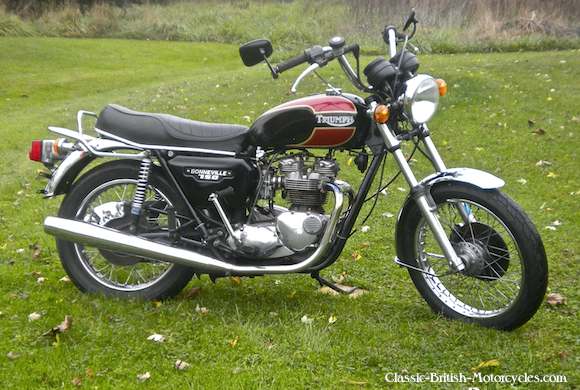
BODYWORK
All 1980 Triumph Bonneville seats were now of the stepped design begun with the 1977 Bonneville Silver Jubilee, now all finished in black. All side panels were now black regardless of tank color & all the fenders were now chromed also. The right side panel now had an inspection window for checking rear brake fluid level. The T140D Bonneville Special got shorter fenders than the standard Bonneville T140E.
LOTSA COLORS
The 1980 Triumph Bonneville T140E was available in 2 color combos for the UK market & 4 colors in the US. For the UK, there was Steel Gray & Candy Apple Red; Black with White Stripes. The US market got 3 color choices: Black & Candy Apple Red; Olympic Flame & Black; & Steel Gray & Black (shown here in these photos). The 1980 Triumph Bonneville Bonneville Special (T140D) was available in Black with Gold pinstriping in both markets.
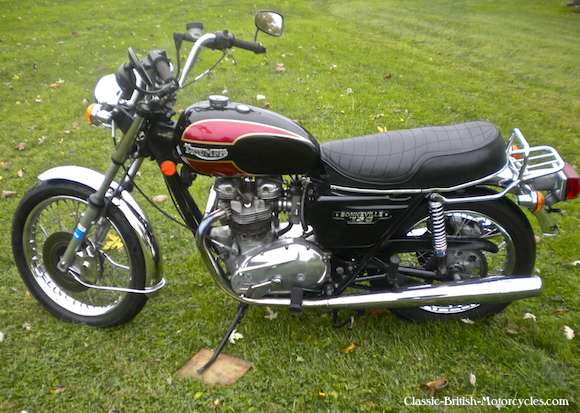
1980 Triumph Bonneville SPECIFICATIONS
|
T140E Bonneville T140ES Bonneville Engine type Displacement Bore & Stroke Compression Carburetors Ignition Engine output Primary drive Primary sprockets Clutch Gearbox Ratios, overall: 1st, bottom 2nd 3rd 4th 5th, top Final drive Final drive sprockets Frame type Suspension, front Suspension, rear Brake, front Brake, rear Tire, front Tire, rear Fuel capacity Wheelbase Seat height Ground clearance Weight |
5-speed 750 Roadster 5-speed 750 Electric Start Air-cooled OHV vertical twin 744cc / 45.0 ci 76mm X 82mm / 2.99″ X 3.23″ 8.6:1 2- Amal Concentrics MkII, 30mm Battery & coil, Lucas 49 bhp @ 6200 rpm 3/8″ triplex X 84 links Engine 29T X Clutch 58T Multi-plate, wet 5-speed constant-mesh, left-foot shift — 12.25:1 8.63:1 6.58:1 5.59:1 4.7:1 5/5″ X .400″ X 3/8″ chain X 106 links Gearbox 19T X Rear 47T All-welded, oil-bearing large-tube backbone Telescopic fork, hydraulic damping 2-way Swing arm, 2 Girling dampers 10″ disk, 2-piston hydraulic caliper 10″ disk, 2-piston hydraulic caliper 3.25″ X 19″ Dunlop, ribbed 4.00″ X 18″ Dunlop, universal 3 Imp gal (US) / 4 Imp gal (UK & export) 54.5″ / 140.3 cm 32.5″ / 77.5 cm 5″ / 12.7 cm 395 lbs/ 180 kg |


